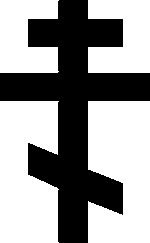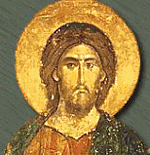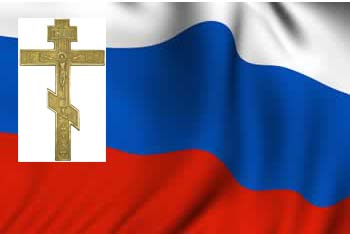The Byelorussian Exarchate
The Page Content
- The Byelorussian Exarchate
- The Belarusian Autocephalous Orthodox Church
- Information
The Byelorussian Exarchate
Another name of the Belarusian Exarchate is Belarusian Orthodox Church. In 1990 Belorussia was designated an exarchate of the Russian Orthodox Church, creating the Belarusian Orthodox Church. In the early 1990s, 60 percent of the population identified themselves as Orthodox.
|

|
|
According to canon law, the ten eparchies on the territory of Belarus make the Belarusian Exarchate of Russian Orthodox Church, established in 1990.
The Exarchate is independent in administrative matters, and is accountable before the Synod, headed by His Grace Philaret, the Metropolitan of Minsk and Slutsk, the Patriarchal Exarch of all Belarus who assumed the Minsk See in 1978.
The Polotsk eparchy, and eparchies in Mogilev and Pinsk were restored in October 1989. The Gomel eparchy was restored, and a new Brest eparchy was established in January 1990. In May 1992 eparchies in Turov and Vitebsk were established.
There were 609 parishes in the republic by the end of 1991. By July 1, 1994, Belarusian Orthodox Church comprised 850 parishes and 8 monasteries, and by the time of the second visit of His Holiness the Patriarch of Moscow Aleksiy II to White Russia, there were already918 parishes, 3 monasteries and 6 convents.
Minsk Theological College (closed in 1963) started its work again in 1989; further on, Belarusian Theological Academy was set up in accordance with the 1993 resolution of the Synod.
The monasteries are situated in the following places: the Holi Assumption Stavropigial monastery is in the town of Jirovichi, Grodno region, the Holi Epiphany Kuteinski monastery is in Orsha, Vitebsk region, and The Holi Annunciation Stavropigial monastery is in the village of Lyady, Minsk region. Among the convents are: the Saviour-Ephrosinia convent in Polotsk, the Holi Virgin Nativity convent in Grodno, St Nicholas convent in Mogilev, the St Barbara convent in Pinsk, the Holi Protective Veil convent in Khoiniki, Gomel region, and a convent in honour of the Tikhvin Icon of Virgin Mary, situated in Gomel.
By July 22, 1995, there were 38 monks and 14 lay brothers in the monasteries mentioned. As for the convents, there were 57 nuns, 33 lay sisters, and 3 nuns that had taken vows of schema.
14 Orthodox friaries and 15 sisterhoods exist now at parishes and Eparchial Administrations.
By the beginning of 1995, the Exarchate’s publications included 8 church newspapers, 3 magazines and an information bulletin. There were 54 church libraries registered.
To Top
|
|
The Belarusian Autocephalous Orthodox Church
The Belarusian Autocephalous Orthodox Church, which has sometimes abbreviated its name as the "B.A.O. Church" or the "BAOC," aspires to be the self-governing national church of an independent Belarus, but it has operated mostly in exile since its formation, and even some publications of the church acknowledge that it sometimes had to struggle for viability. It has been hampered by the hostility of successive Belarusian governments, a lack of canonical acceptance from the main national Orthodox churches and, in much of the diaspora, a relatively small number of people who identify with the Belarusian nationality.
Members of the church initially belonged to the Polish Orthodox Church that was granted autocephaly by Constantinople following the First World War. On July 23, 1922, at the Sobor in Minsk, the Belarusian Autocephalous Orthodox Metropolia was resurrected. The Belarusian Autocephalous Orthodox Church in Belarus survived until 1938 when it was destroyed by the Bolsheviks. It was revived in the late 1940s. Since the fall of the Soviet Union, it has attempted to establish itself in Belarus, where most Orthodox Christans belong to a jurisdiction of the Russian Orthodox Church. Western governments have accused the Belarusian government of actively persecuting the BAOC.
The present Primate of the Belarusian Autocephalous Orthodox Church is Metropolitan Iziaslav (Brutskiy) who resides in the USA. Metropolitan Iziaslav (Brutskiy) was ordained to the episcopacy on February 22, 1981 by Metropolitan Andrey, along with Metropolitan Mstyslav (Skrypnyk) and Archbishop Orest of the Ukrainian Autocephalous Orthodox Church. He succeed Metropolitan Andrey, who died in May 1983. Metropolitan Iziaslav (Brutskiy) was elected Primate at the Third Sobor of the Belarusian Autocephalous Orthodox Church abroad, in May, 1984 in Manchester, England.
To Top
|
|
Information
Before 1917 Belorussia had 2,466 religious communities, including 1,650 Orthodox, 127 Roman Catholic, 657 Jewish, thirtytwo Protestant, and several Muslim communities. Under the communists (who were officially atheists), the activities of these communities were severely restricted. Many religious communities were destroyed and their leaders exiled or executed; the remaining communities were sometimes co-opted by the government for its own ends, as in the effort to instill patriotism during World War II.
To Top
|
|
Type your query in the box below:
|
|
|
|

